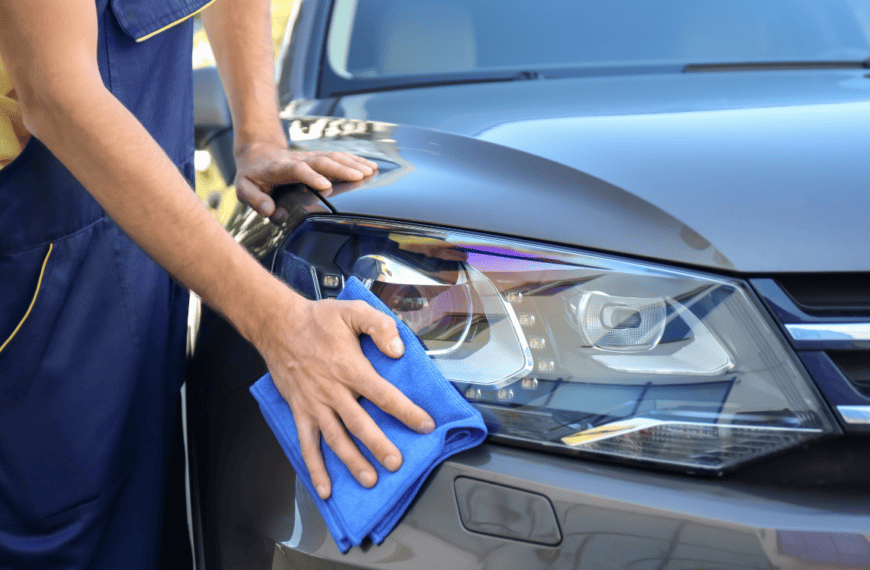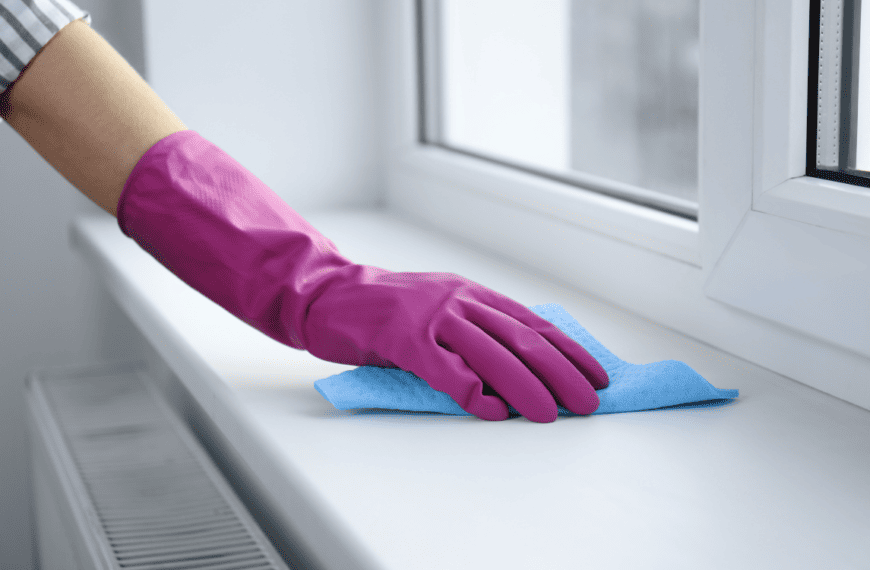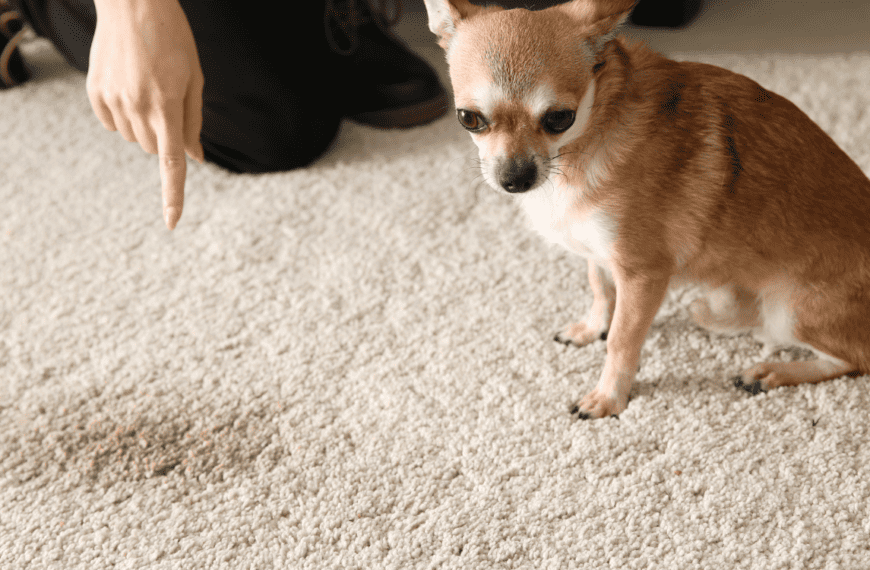Bathroom cleanliness is almost a cruel joke.
More than any other room in the house, the bathroom needs frequent deep cleanings. But according to an ACI National Cleaning Institute survey, more than 50% of Americans dread cleaning the tub and toilet over any other chore!
As both a necessity and a nightmare, bathroom cleaning has to be as quick and painless as possible. How convenient and time-saving would it be if there was an all-natural, all-in-one cleaner that could give your bathroom the top-to-bottom shine it demands?
It may sound impossible, but therein lies the magic of vinegar! We talk all day about the benefits of this handy DIY cleaner, so let’s explore the actual extent of its usefulness with these unique ways to clean bathrooms with vinegar.
How to Clean Your Bathroom with Vinegar
Virtually every type of vinegar offers the acetic acid necessary to bust through soap scum, lift dirt, and dissolve hard water. But from a practical standpoint, distilled white vinegar is the best vinegar for cleaning.
White vinegar won’t stain surfaces like balsamic or red wine vinegar. And it isn’t as expensive as white wine or apple cider vinegar. Cleaning vinegar is a potent white vinegar you can dilute to your preference, but you’ll most likely have your standard distilled white vinegar on hand.
Prep Your White Vinegar Cleaning Solution
When you mix equal parts vinegar and warm water in an empty spray bottle, you have an all-purpose solution for nearly every bathroom surface. Add a few drops of essential oil for a fragrant boost to cover the vinegar smell. Some oils, like tea tree oil, also offer antimicrobial qualities.
Some other bathroom-cleaning helpers to have on hand include:
- Baking soda
- Salt
- Hydrogen peroxide
- Rubbing alcohol
- Microfiber cloth
- Soft-bristle brush
- Paper towels
With these items, you’re ready to take on the toughest messes and bathroom odors. Follow these vinegar cleaning tips to make your bathroom sparkling clean.
1. Cleaning Bathtub and Shower Walls
Use your white vinegar cleaning solution to break down soap scum, mold, and dirt in your bathtub. Spray it liberally around your bathtub and shower walls, let it sit for several minutes, and wipe it down with a sponge or soft cloth. For more cleaning power, add a tablespoon of dish soap to your vinegar solution.
Handling Tough Bathtub Stains
If you have extra tough stains, rings, and stuck-on gunk, sprinkle baking soda over them. Use it as a gentle scrub with a damp cloth or spray it with vinegar to create the gunk-busting fizzing reaction. If you do the latter, let it bubble for a couple of minutes and wipe it down. Rinse with hot water to finish up.
2. Clean Your Shower Head with a Vinegar Soak
To refresh your shower head and dissolve mineral deposits, fill a plastic bag with straight vinegar and wrap it around the shower head. Hold it in place with a heavy-duty rubber band, or detach the shower head and soak it in a bowl of white distilled vinegar.
Let the shower head soak in the vinegar for a few hours or overnight. Any tough stains should wipe away with ease in the morning.
3. Clean the Toilet Bowl with Vinegar
Soak several paper towels in vinegar to clean the nasty buildup around the toilet bowl edge. Stuff them around the edges so that they stick in place. Let them sit for a few hours before scrubbing down the toilet bowl.
For a quick cleaning, pour white vinegar into the toilet bowl. Let it sit for several minutes before scrubbing with the toilet brush.
4. Vinegar Glass Cleaner for Windows and Mirrors
Vinegar evaporates quickly and cuts through residue, so it’s perfect for your bathroom windows and mirrors. Your all-purpose water and vinegar solution can work here, but in the most efficient DIY window cleaner, vinegar takes a back seat to a bathroom staple — rubbing alcohol.
Rubbing alcohol evaporates quickly to leave a streak-free shine and disinfects surfaces. It isn’t as effective at cutting through grime, but that’s where white vinegar picks up the slack. Mix them with water in a spray bottle in the following amounts to make the best DIY window cleaner:
- 2 parts rubbing alcohol
- 2 parts distilled water
- 1 part white distilled vinegar
Spray the cleaner, and wipe with a clean microfiber cloth, newspaper, or other lint-free material. For more great ideas on tackling bathroom glass, check out our guide to cleaning windows with vinegar.
5. Vinegar for Sparkling Clean Shower Doors
Shower doors get super-gunky, but they’re also one bathroom glass surface you can rinse without making a mess. Add a few drops of dish soap to your vinegar and water spray for testy shower door grunge. Although soap can leave residue, you can rinse it with the shower head after cleaning.
From baking soda to lemon juice, numerous household ingredients can become part of an effective shower cleaning routine. Check out our shower door cleaner recipes for convenient cleaning and spectacular results.
Don’t forget the tracks when you clean shower glass doors. Though often overlooked, door tracks are a prime collection point for soap scum and breeding ground for mold.
Being made of metal and having hard-to-clean corners, tracks require a different approach than your shower doors. Fortunately, many household ingredients can effectively clean your shower door tracks.
6. Kill Shower Curtain Mildew with Vinegar
Cleaning shower glass isn’t too much to ask, but most of us would rather pitch a mildewy shower curtain than clean it. But with the mold-killing power of white vinegar, you can make mildew removal easy and non-toxic.
Spray your vinegar cleaning solution on mildewy plastic liners, and allow it to work for 10–15 minutes. Wipe it down with a sponge. In the laundry room, you can treat washable fabric liners and curtains by adding 2–3 tablespoons of white vinegar to the wash cycle.
7. Clear Clogged Drains with Vinegar and Baking Soda
With hair, dirt, and soap scum constantly filling them, bathroom sinks and shower drains are prone to clogs. To fix a stuck or slow-running sink drain, use vinegar and baking soda to dissolve and dislodge materials without worrying about damaging your pipes.
- Pour hot water down the drain
- Dump ½ cup baking soda in the drain
- Mix one cup of vinegar with one cup of boiling water and pour it down the drain
- Plug the drain with a rag for 5–10 minutes
- Pour more hot water down the drain
Cleaning your sink and shower drain with a baking soda and white vinegar combo during your regular bathroom deep cleans to prevent challenging clogs down the line. For a better vinegar smell, try subbing apple cider vinegar in for the standard white distilled vinegar.
8. Cleaning Bathroom Sinks and Faucets with Vinegar
The acetic acid in white vinegar dissolves hard water stains and mild rust spots, two common issues with bathroom faucets and drains.
Spray your vinegar and water cleaner on your bathroom sink and shower faucets, let it sit for several minutes, and wipe it clean with a microfiber cloth. Rinse clean with warm water or a damp cloth, ensuring there isn’t lingering vinegar.
Soak a few paper towels in a vinegar solution, and wrap them around the faucets to clean hard-to-reach undersides. For rust, mix a little salt with undiluted vinegar and apply it to the stain. Use a soft or medium-bristle toothbrush to scrub out the rust.
Can You Clean Bathroom Tiles with Vinegar?
There are countless opportunities for cleaning with vinegar around the house. But for all the right ways to use vinegar, there are just as many wrong ways, and tile is one area that doesn’t always take kindly to white vinegar.
You can often use your vinegar and water spray to clean ceramic or porcelain bathroom tiles and sealed grout if you rinse them well with water afterward. Unfortunately, most stone floors can suffer pitting or etching from vinegar’s acidity, and unsealed grout will quickly wear down.
Rather than put your floor at risk with vinegar, try baking soda and hydrogen peroxide to clean dirty grout and tiles. Mix them in equal portions to form a paste that can clean grime, grease stains, and dirt to restore dirty grout and tiles.
Will Vinegar Damage Metal Bathroom Fixtures?
As with stone, vinegar can eat away at certain metals over time. Although the weak acidity in your cleaning solution won’t do much harm, cleaning and rinsing away any remaining vinegar after using it will protect your shower door tracks, sink drains, and faucets.
Can Vinegar Sit Overnight in the Toilet?
White vinegar can sit in your toilet overnight without causing any damage or staining your toilet. Add undiluted vinegar to your toilet bowl and tank. Leave them to soak for up to 12 hours to kill mold, dissolve mineral deposits and rust, eliminate odors, and loosen grunge.
Schedule an Eco-Friendly Deep Cleaning Today!
Cleaning with vinegar in the bathroom makes an overwhelming chore as easy as possible. With these vinegar cleaning tips, you’ll have no problem enjoying better results with less work and fewer chemical fumes. And for those times when you need a little extra help, you can lean on Anita’s!
When you work with Anita’s, the dreaded bathroom deep clean becomes 100% stress-free! In only a few minutes, you can customize a visit from a local cleaning expert who fits your exact needs and your busy schedule. Request a booking for an eco-friendly deep cleaning today!









